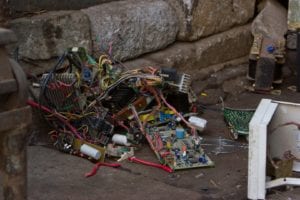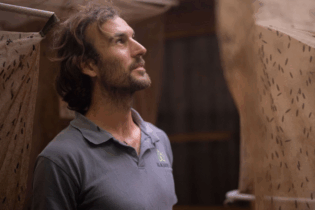Discarded electronics is fast becoming one of the most rapidly growing forms of waste on earth.
By 2050, the amount of e-waste will more than double to 120 million metric tons a year if nothing is done to tackle this massive problem. This is due to technological revolution and increasing manufacturing of these technologies. The world produces roughly 50 million tons of e-waste, annually, but only 20% of this is formally recycled. Most electronic waste ends up in landfill sites, or is disposed of incorrectly in poverty-stricken communities. However, the e-waste industry could also have the potential to become a significant player in the world’s economy. Cape Town based jewellery designer Ashley Heather and her team work with e-waste to create amazing jewellery pieces. According to the Citizen, Heather first worked with silver recycled from photographic waste, but it soon became unsustainable when traditional darkroom photography faded. E-waste was a better fit, seeing as the need to recycle it became more critical. Plus it contained silver and gold.They mostly use circuit boards, which she told twyg in an interview were source from all over the country both independently and in partnerships with e-waste aggregators.
“Gold and silver are used in electronics because they are such great conductors of electricity. When people think of circuit boards they often think of green printed circuit boards but there is also gold and silver in elements related to them such as contractors and CPUs, we process these as well.,” she said to twyg. Even though the process of harvesting gold and silver from e-waste is labour-intensive, Heather said she wouldn’t swap it for anything else. “E-waste is such a diverse category of waste that a one-size-fits-all solution isn’t viable,” Heather said to the Citizen. On average, Heather said, 2kg of silver and 80g of gold were extracted from five kilograms of circuit boards. Sources: twyg, Citizen, ashleyheather.co.za







